Rustic Rosemary Sourdough Bread
This post may contain affiliate links. See my disclosure policy.
This Rosemary Sourdough Bread recipe produces a superbly crispy crust with a soft and chewy interior. The flavor and fragrance are simply heavenly! It also freezes well so feel free to make an extra loaf while you’re at it to conveniently have on hand.
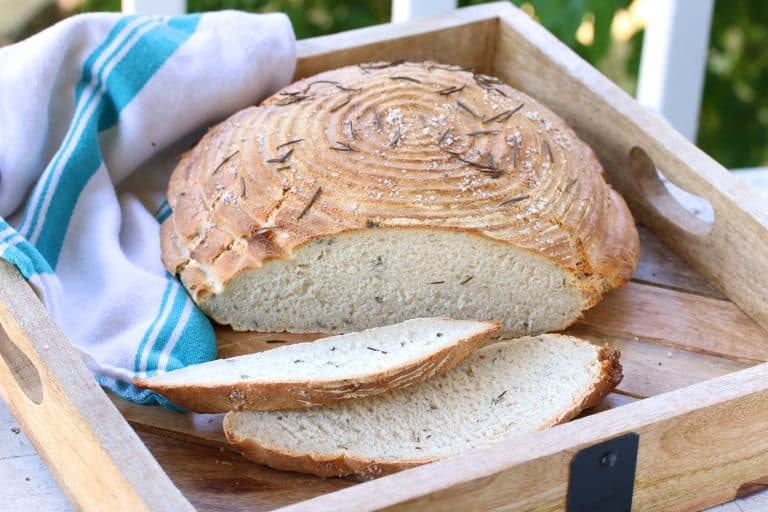
I can’t think of anything that beats the smell of bread baking in the oven. The fragrance has a hypnotic way of luring people into the kitchen, taking slow and deliberate whiffs along the way. This rosemary sourdough bread has that effect on our family.
Why Sourdough?
Sourdough has been used for eons, at least since the ancient Egyptians, and serves several valuable purposes: 1) The wild yeast and bacteria in a sourdough starter cause a chemical reaction through the fermentation process that breaks down some of the proteins and carbohydrates in the flour (interestingly, some celiacs are able to eat sourdough bread). 2) This process also produces enzymes that breaks down phytic acid (which inhibits the body’s ability to absorb nutrients) and increases the body’s capacity to absorb vitamins and minerals from the bread as well as improves the body’s ability to digest it. 3) The flavor! It’s richer and more complex. 4) I love the firm, hard texture of sourdough crusts juxtaposed against that soft, chewy interior.
NOTE: To enjoy the full benefits all four of the points mentioned above, give the dough a long and slow rise, preferably at least 24 hours in the fridge before taking it out to continue rising at room temp.
If you’re fortunate enough to have a friend with a sourdough starter, ask them if they’ll share. If not it’s easy to make yourself, it will just mean some waiting time. Do an online search for how to make sourdough starter and you’ll find a ton of resources.
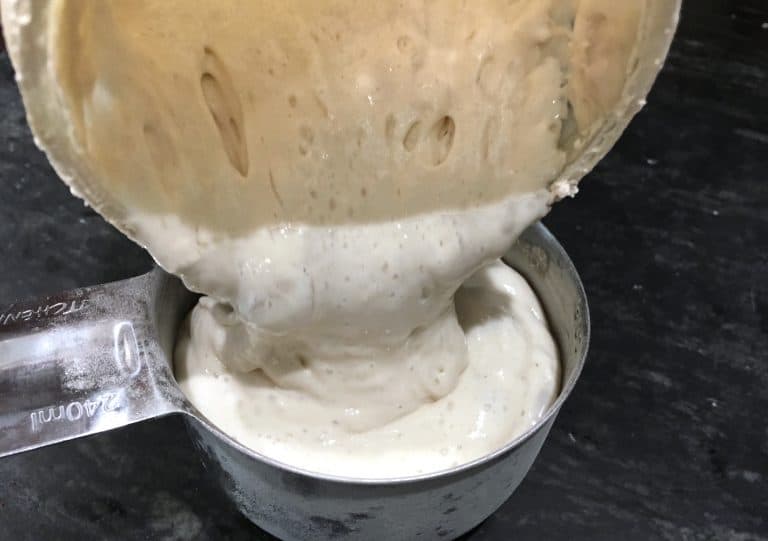
Lately this has been the most requested bread in our home. Specifically, our kids have been clamoring for more and more ever since they had their first slice of it slathered with European butter. They also LOVE grilled Swiss cheese sandwiches with this bread (and so do we!). Plain or embellished, we’re confident you’re going to love it, too!
Why Use Sourdough Starter and Commercial Yeast Together?
For this bread we’re using both sourdough starter and some commercial yeast together for a couple of reasons. Yeast produces carbon dioxide which creates extra volume in the finished bread, and adding some yeast also results in a more tender, lighter crumb.
Can You Freeze Rosemary Sourdough Bread?
Yes! This bread freezes well and in a freezer bag will keep for up to a month. My favorite way to freeze it is to pre-slice it and place cutout parchment sheets between the slices and then I can simply pull out however many slices I want and let them thaw at room temperature.
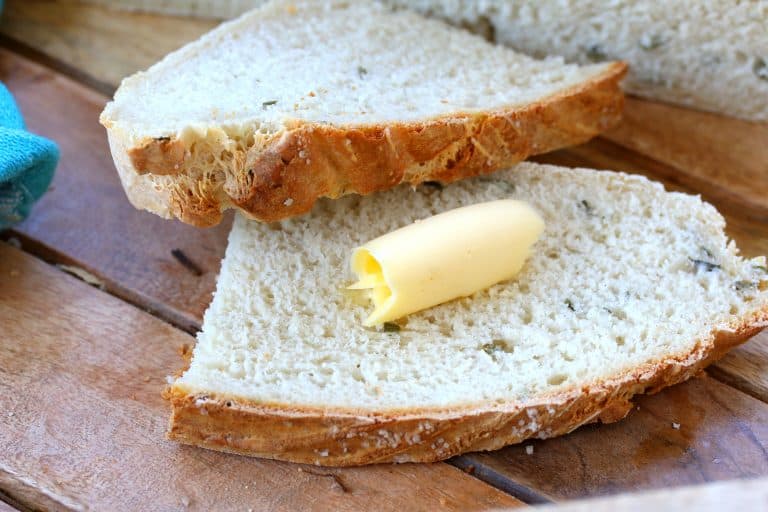
Rosemary Sourdough Bread Recipe
Let’s get started!
Note: we’re using both sourdough starter and some commercial yeast together for a couple of reasons. Yeast produces carbon dioxide which creates extra volume in the finished bread, and adding some yeast also results in a more tender, lighter crumb.
Place all of the ingredients in a stand mixer and knead on the “2” bread setting for 6-8 minutes until a smooth dough forms. (Alternatively knead by hand for about double the length of time.)
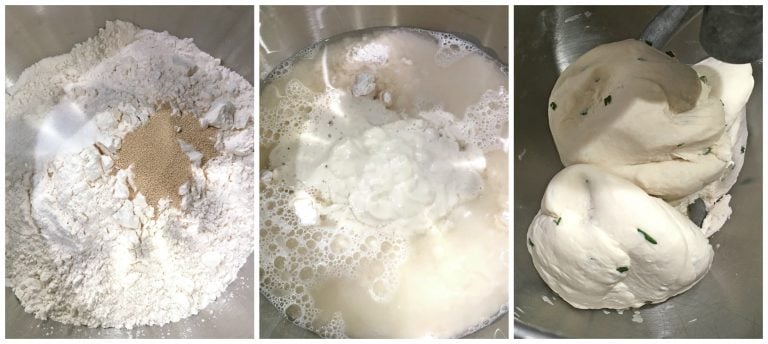
Form the dough into a ball, lightly spray the bowl with oil, return the dough to the bowl and cover loosely with plastic wrap. Set in a warm place and let it rise for about 90 minutes or until doubled in size.
Punch the dough down with your fist. Form the dough into a round and place it in a 10″ banneton (recommended) or comparable loaf pan. Let the dough rise again for about one hour until nearly doubled in size. In the meantime, preheat the oven to 425 degrees F.
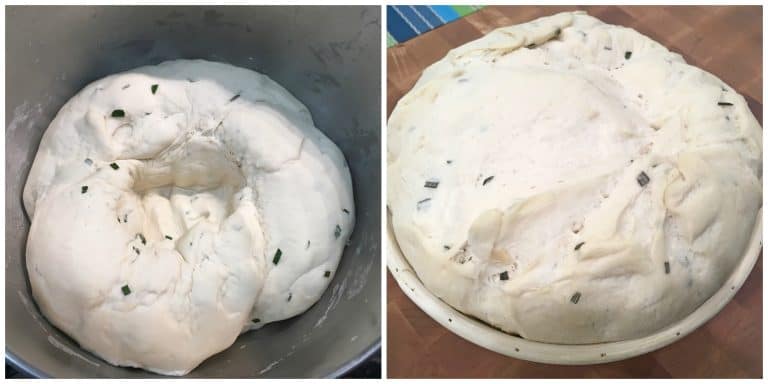
If using a banneton, invert the bread onto a baking stone or sheet.
Spray the dough with water and use a long serrated knife to cut two 1/2 inch diagonal slashes into the dough (not shown in picture). Sprinkle with some extra rosemary and some coarse salt like fleur de sel.
Bake the bread for 25 to 30 minutes, until it’s a dark golden brown. NOTE: You can also place the bread on a baking stone that’s been preheated. The baking stone absorbs the oven’s heat and transfers it to the bread for an evenly crispy crust.
Transfer the finished bread to a wire rack and let it cool.
Best enjoyed while still warm. Also excellent toasted or made into grilled cheese sandwiches.
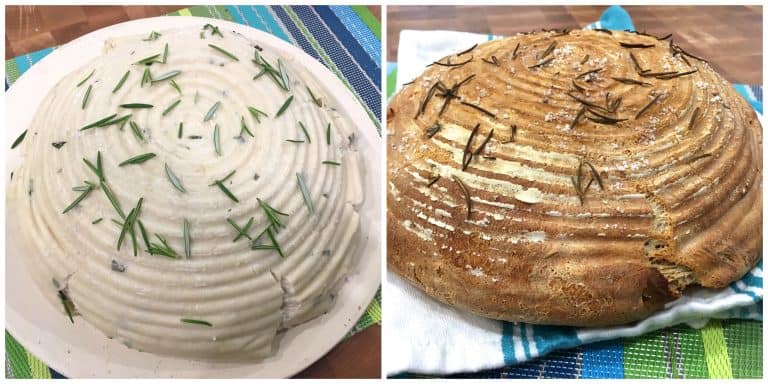
Enjoy!
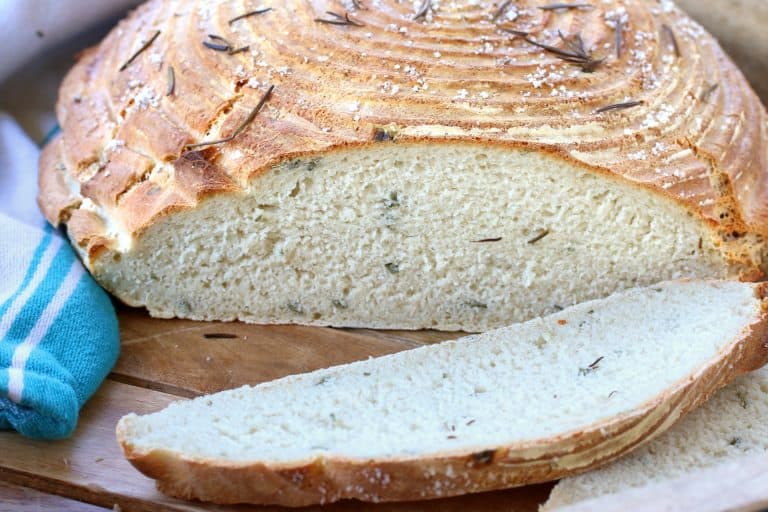
For more homemade bread recipes be sure to try my:
- Cinnamon Raisin Sourdough Bread
- Roasted Tomato Herb Bread
- Danish Rye Bread
- German Bread (Vollkornbrot)
- Olive Rosemary Focaccia
- Lavash
- Naan
- Injera
- Paleo Bread
Save This Recipe
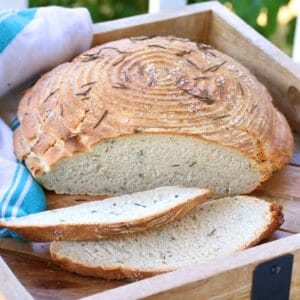
Rosemary Sourdough Bread
Ingredients
- 5 cups all-purpose unbleached flour
- 1 1/2 cups lukewarm water
- 1 cup ripe sourdough starter
- 1 teaspoon instant yeast (use 2 teaspoons if your sourdough isn’t very vigorous)
- 3-4 tablespoons chopped fresh rosemary
- 2 1/2 teaspoons sea salt
- Extra rosemary and coarse salt (like fleur de sel) for sprinkling on the exterior
Instructions
- Place all of the ingredients in a stand mixer and knead on the “2” bread setting for 6-8 minutes until a smooth dough forms. (Alternatively knead by hand for about double the length of time.) Form the dough into a ball, lightly spray the bowl with oil, return the dough to the bowl and cover loosely with plastic wrap. Set in a warm place and let it rise for about 90 minutes or until doubled in size.
- Punch the dough down with your fist. Form the dough into a round and place it in a 10″ banneton (recommended) or comparable loaf pan. Let the dough rise again for about one hour until nearly doubled in size. In the meantime, preheat the oven to 425 degrees F.
- If using a banneton, invert the bread onto a baking stone or sheet. Spray the dough with water and use a long serrated knife to cut two 1/2 inch diagonal slashes into the dough. Sprinkle with some extra rosemary and some coarse salt like fleur de sel.Bake the bread for 25 to 30 minutes, until it’s a dark golden brown. NOTE: You can also place the bread on a baking stone that’s been preheated. The baking stone absorbs the oven’s heat and transfers it to the bread for an evenly crispy crust. Transfer the bread to a wire rack and let it cool. Best enjoyed while still warm. Also excellent toasted or made into grilled cheese sandwiches.
- NOTE: For the BEST flavor and texture results, wrap the dough tightly in plastic wrap before the first rise and let it sit in the fridge for at least 24 hours, punch it down occasionally, and then let it rise as normal at room temperature when you’re ready to bake it (note, it will take longer since the dough is cold).
Nutrition
Originally published on The Daring Gourmet September 19, 2018



















I have made this several times and it is delicious but my loaves are not pretty. First I followed directions explicitly. At 425 they were pale. I tried higher temp, 450 they were brown but kind of a burned brown not a golden brown. Any additional tips on how to get a pretty golden brown exterior?
Hi Marge, there are a few reasons this could be happening but the most common reason for pale bread is that the dough is over-fermented. Bread relies on sugars to brown and when the dough ferments “too” long those sugars are depleted. So that’s one thing to consider. But another thing you can do is what many professional bakers do which is to brush the risen dough with either milk, egg, or water before baking – that will give it a nice browned crust.
Hello – Can you freeze the dough? To bake at a later time? (Sorry if this is a dumb question – a newby?)
I am so thrilled to find this recipe. It’s exactly what I was looking for as I have no interest in “quick” and “easy” recipes … not that this one is difficult. I LOVE taking the time to cold ferment my dough, sometimes for 5-to-7 days. It’s worth the wait, believe me.
Thank you for taking the time to share this recipe with us!
Hello. I just recently started making with sour dough. I’m wondering if anyone has baked this as an oblong loaf? I would rather have the same size slices of bread instead of a round loaf. Do you know if you bake is longer or for less time? Thoughts? This recipe looks AMAZING. I’m going to add garlic to it because I love how well garlic and rosemary go together.
Hi Alicia, yes you can bake it in an oblong shape, no problem. If the loaf is higher/thicker then you may need to increase the baking time by a little. The easiest way to determine doneness is to use a digital thermometer – stick it into the center of the loaf and aim for about 190 degrees F. Happy baking!
They also make inexpensive oblong bannetons (proofing baskets) if you want to impress with that artisanal-look.
I’ve recently started baking with Sourdough. I baked your Rosemary bread today and it’s delicious! I was actually surprised since it didn’t need to rise overnight. Thank you for sharing this tasty recipe!
I’m so glad you enjoyed it, Claudia, thank you!
Hi Alyssa – thanks for the brilliant recipe! I have a quick question – can I replace fresh rosemary with dried rosemary? It’s still lockdown where I am in the UK and struggling to find fresh rosemary… Thanks!
Hi Mina, you bet. It’s generally 1/3 the amount in dried herbs, so I’d aim for around a heaping tablespoon of dried rosemary. Happy baking!
can you make this with bread flour?
Hi Ellen, yes you can.
Help! why does this need a packet of yeast if I use starter?
Hi Alyssa, it’s a particular method that’s used in some French-style breads and many bread “masters” (Reinhart, Hamelman, Silverton, Calvel, etc) likewise use both levain (sourdough starter) and a small amount of yeast for some of their breads. It helps speed up the process, maintains consistent rising, and creates a milder sour flavor.
this was the best bread i have ever eaten!
I’m so glad, lulu, thank you!
I have made this twice and it is a big hit! My family loved it! The second time I did bake it in my Dutch oven and it came out great! I took the cover off of the oven after 15 minutes, baked it another 15 in the Dutch oven, and then took it out and baked in on the rack of the oven for another five minutes or so.
Wonderful, Valerie, I’m so glad you enjoyed it, thank you!